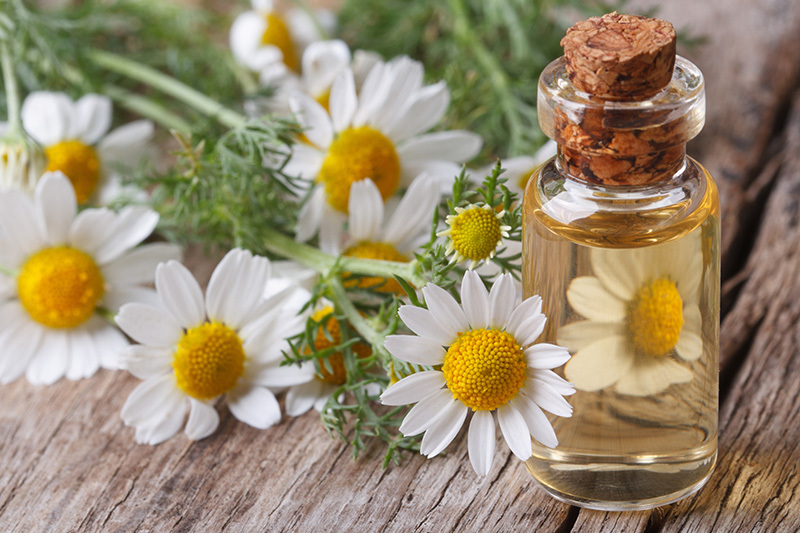Explore 7 Astonishing Tulip Facts That Will Amaze You
Posted on 26/08/2025
Explore 7 Astonishing Tulip Facts That Will Amaze You
Whether you're a passionate gardener, a history buff, or simply captivated by the vibrant colors of spring, tulips hold a special place in the heart of flower enthusiasts worldwide. But how much do you really know about these iconic blooms? In this comprehensive guide, we'll explore 7 astonishing tulip facts that promise to deepen your appreciation and amaze your friends!

1. Tulips Are Not Native to the Netherlands
When you think of tulips, the Netherlands probably comes to mind instantly, thanks to its famous tulip fields and vibrant spring festivals. However, one of the most surprising tulip facts is that tulips did not originate in Holland!
- Original Habitat: Tulips are native to a region stretching from Central Asia to Southern Europe. Wild tulips grew in the foothills of the Tien Shan Mountains and across the steppes of Kazakhstan, Uzbekistan, and parts of Iran and Turkey.
- Journey to Europe: Traders and explorers brought tulip bulbs to Europe in the 16th century, where they quickly captured the hearts (and fortunes) of Europeans.
Fascinating, isn't it? The mesmerizing fields of Dutch tulips we see today owe their origins to seeds and bulbs brought from the mountains of Asia!
2. Tulip Mania: The First Economic Bubble
If you're interested in economics, you'll be amazed to learn that tulips were at the center of one of the world's first recorded financial bubbles--an episode now called Tulip Mania.
The Craze of the 1630s
- During the Dutch Golden Age, tulips became a symbol of luxury and high status.
- Single rare bulbs sold for prices exceeding that of an average home in Amsterdam!
This astonishing tulip fact demonstrates that humans have a long history of being enchanted--sometimes to excess--by the beauty and rarity of flowers. The market for complex and colorful tulip hybrids fueled this brief but dramatic economic frenzy before collapsing spectacularly.
Did You Know? Some of the most sought-after tulip varieties during Tulip Mania were affected by a mysterious virus (known now as the "tulip breaking virus"), which resulted in spectacular flame-like streaks on their petals.
3. Tulips Come in Almost Every Color
One of the most joyous tulip characteristics is their kaleidoscopic range of colors. Tulips bloom in nearly every hue under the sun, with only a few exceptions.
- Common Colors: Red, pink, yellow, purple, orange, and white are standard tulip colors. Some varieties nearly appear black!
- Green Tulips: Contrary to belief, green tulip varieties exist, often displaying unique streaks or entirely green petals.
- Missing Color: True blue tulips don't exist (yet). Despite decades of hybridization, a genuinely blue tulip remains elusive.
Gardeners and botanists continually crossbreed tulips to create new colors and patterns, so the spectrum of tulip shades keeps expanding. If you're searching for a floral rainbow, tulips are your flower!
4. Tulip Symbolism Across Cultures
Tulips aren't just pretty--they're loaded with symbolic meanings, making them popular for all occasions.
- Love and Passion: In many cultures, especially in Turkey and Persia, tulips symbolize perfect love.
- Prosperity and Renewal: In the Netherlands, tulips are seen as a symbol of renewal, thanks to their arrival each spring after long winters.
- Varied Meanings by Color:
- Red tulips: Declaration of true love
- Yellow tulips: Cheerfulness and sunshine
- Purple tulips: Royalty and elegance
- White tulips: Forgiveness or purity
Next time you gift someone tulips, you can tailor the color to reflect your true feelings. This is one tulip fact worth remembering!
5. Tulips Are Edible--But With a Warning!
Here's a tulip fact that might surprise you: tulip petals are technically edible. During World War II, when food shortages were rampant in the Netherlands, some people turned to tulip bulbs and petals as a desperate food source.
- Petals: Fresh tulip petals can be used as a colorful garnish in salads or desserts. However, always ensure petals are pesticide-free and not from a florist bouquet, which may have chemical residues.
- Bulbs: The bulbs are starchy and were baked or boiled during famines. However, some parts of the bulb contain toxic compounds, so they should only be consumed with great caution, if at all.
Caution: While tulip petals could be safe for consumption in small amounts, the bulbs can be toxic to both humans and pets. Eating tulip flowers and bulbs should be reserved for emergencies--or adventurous culinary experiments under expert guidance!
6. There Are Over 3,000 Tulip Varieties
If you love diversity in your garden, you'll be thrilled to learn this astonishing tulip fact: according to the Royal General Bulb Growers' Association, there are over 3,000 different tulip varieties officially registered.
- Classification: These varieties are categorized into 15 groups, including single early, double late, Darwin hybrid, Triumph, fringed, parrot, and more.
- Unique Forms: From cup-shaped classics to lily-flowered and parrot tulips with ruffled petals, the diversity is astounding.
- Continuous Innovation: Every year, breeders introduce new hybrids with unique colors, shapes, and sizes.
This staggering range ensures that every gardener can find a tulip to match their taste, soil, and climate!
7. Tulip Festivals: A Global Celebration
The beauty of tulips is so universally beloved that countries and cities around the world celebrate them with spectacular tulip festivals each spring. Here are some world-famous festivals where you can immerse yourself in tulip magic:
Must-See Tulip Festivals
- Keukenhof Gardens - Lisse, Netherlands: Known as the "Garden of Europe", Keukenhof boasts over 7 million bulbs and 800 varieties of tulips in breathtaking displays.
- Canadian Tulip Festival - Ottawa, Canada: Symbolizing international friendship, this festival began after the Dutch royal family sent 100,000 tulip bulbs to Canada in gratitude for sheltering Princess Juliana during WWII.
- Skagit Valley Tulip Festival - Washington, USA: Endless fields of tulips bloom in vibrant stripes, drawing over a million visitors annually.
- Istanbul Tulip Festival - Istanbul, Turkey: Celebrates tulips' deep historical roots in Turkish culture, with millions of blossoms in parks and city squares.
Attending one of these festivals is an unforgettable way to appreciate the true wonder of tulips. Mark your calendars and be prepared for a sensory overload!

Tulip Care: Quick Tips for Your Garden
If these amazing tulip facts have inspired you to grow your own, here are some essential care tips to ensure your tulips flourish:
- Plant in Autumn: For a stunning spring display, plant tulip bulbs in the fall before the ground freezes.
- Choose Well-Drained Soil: Tulip bulbs can rot in soggy conditions. Opt for raised beds or amend your soil with sand if needed.
- Sunlight Matters: Tulips love full to partial sunlight--ensure they receive at least 6 hours of direct sunlight.
- Water Wisely: Water after planting and sparingly during winter. Overwatering can cause bulbs to rot.
- Post-Bloom Care: Let the foliage die back naturally after blooming; this helps bulbs recharge for future years.
Pro Tip: To enjoy colorful tulips year after year, dig up and store bulbs in a cool, dry place after the foliage has died back (especially in warmer climates where they may not naturalize well).
Conclusion: Tulips, Nature's Masterpieces
Tulips are more than just a springtime delight; they are riddled with fascinating stories, economic sagas, and cultural symbols. From Central Asian mountains to Dutch fields, from extravagant financial manias to global festivals, these blooms have shaped history, art, and even the culinary world.
Next time you see a vibrant tulip bed, remember these 7 astonishing tulip facts and share your newfound knowledge with others. Tulips truly are nature's enduring masterpieces--and now you have even more reasons to cherish and celebrate them!
Want to discover more about tulips, their care, or the world's most colorful gardens? Bookmark our website for regular updates, gardening tips, and amazing flower facts that will brighten your day!
Latest Posts
Explore 7 Astonishing Tulip Facts That Will Amaze You
Air-Purifying Work Companions: Easy Office Plants
Preserve Your Poinsettias for the Season
Peony Blooms: Discover the Rich Symbolism and Colourful Meanings They Possess






